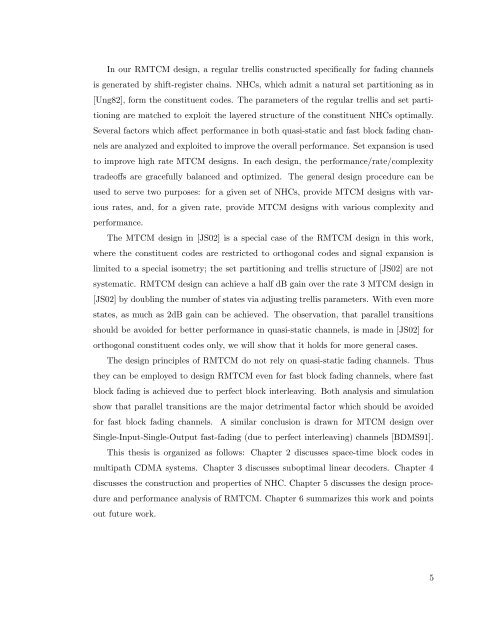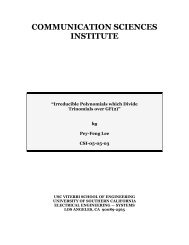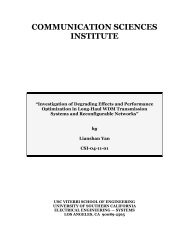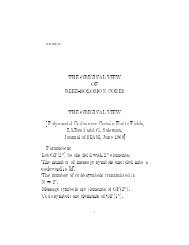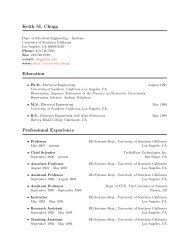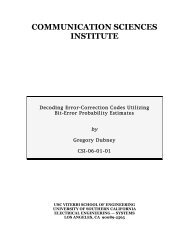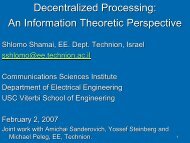Space-Time Block Codes for Wireless Systems - The ...
Space-Time Block Codes for Wireless Systems - The ...
Space-Time Block Codes for Wireless Systems - The ...
You also want an ePaper? Increase the reach of your titles
YUMPU automatically turns print PDFs into web optimized ePapers that Google loves.
In our RMTCM design, a regular trellis constructed specifically <strong>for</strong> fading channels<br />
is generated by shift-register chains. NHCs, which admit a natural set partitioning as in<br />
[Ung82], <strong>for</strong>m the constituent codes. <strong>The</strong> parameters of the regular trellis and set partitioning<br />
are matched to exploit the layered structure of the constituent NHCs optimally.<br />
Several factors which affect per<strong>for</strong>mance in both quasi-static and fast block fading channels<br />
are analyzed and exploited to improve the overall per<strong>for</strong>mance. Set expansion is used<br />
to improve high rate MTCM designs. In each design, the per<strong>for</strong>mance/rate/complexity<br />
tradeoffs are gracefully balanced and optimized. <strong>The</strong> general design procedure can be<br />
used to serve two purposes: <strong>for</strong> a given set of NHCs, provide MTCM designs with various<br />
rates, and, <strong>for</strong> a given rate, provide MTCM designs with various complexity and<br />
per<strong>for</strong>mance.<br />
<strong>The</strong> MTCM design in [JS02] is a special case of the RMTCM design in this work,<br />
where the constituent codes are restricted to orthogonal codes and signal expansion is<br />
limited to a special isometry; the set partitioning and trellis structure of [JS02] are not<br />
systematic. RMTCM design can achieve a half dB gain over the rate 3 MTCM design in<br />
[JS02] by doubling the number of states via adjusting trellis parameters. With even more<br />
states, as much as 2dB gain can be achieved. <strong>The</strong> observation, that parallel transitions<br />
should be avoided <strong>for</strong> better per<strong>for</strong>mance in quasi-static channels, is made in [JS02] <strong>for</strong><br />
orthogonal constituent codes only, we will show that it holds <strong>for</strong> more general cases.<br />
<strong>The</strong> design principles of RMTCM do not rely on quasi-static fading channels. Thus<br />
they can be employed to design RMTCM even <strong>for</strong> fast block fading channels, where fast<br />
block fading is achieved due to perfect block interleaving. Both analysis and simulation<br />
show that parallel transitions are the major detrimental factor which should be avoided<br />
<strong>for</strong> fast block fading channels. A similar conclusion is drawn <strong>for</strong> MTCM design over<br />
Single-Input-Single-Output fast-fading (due to perfect interleaving) channels [BDMS91].<br />
This thesis is organized as follows: Chapter 2 discusses space-time block codes in<br />
multipath CDMA systems. Chapter 3 discusses suboptimal linear decoders. Chapter 4<br />
discusses the construction and properties of NHC. Chapter 5 discusses the design procedure<br />
and per<strong>for</strong>mance analysis of RMTCM. Chapter 6 summarizes this work and points<br />
out future work.<br />
5


